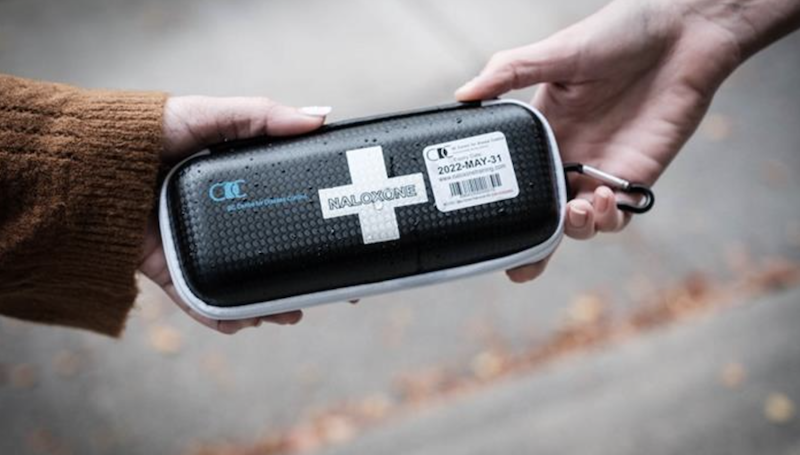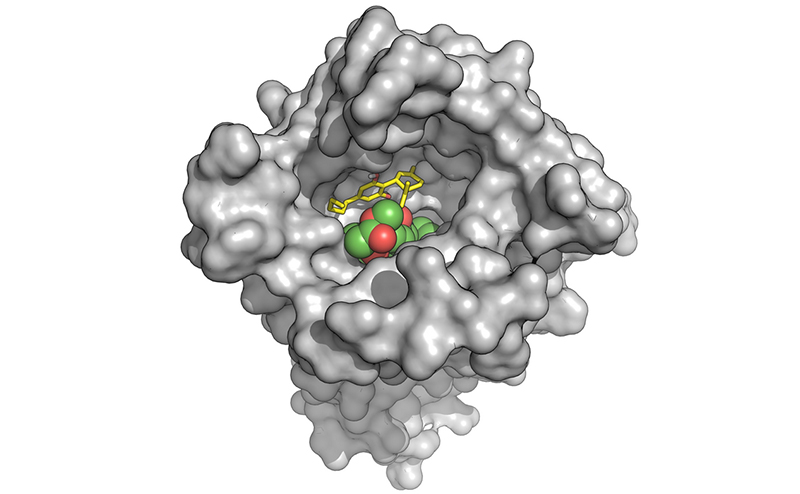Features
CBD yields potential antidote for fentanyl overdoses
Published on March 31, 2023 by David Wylie
 Photo: Contributed
Photo: Contributed An alternative to Naloxone based on compounds found in cannabis could soon be used in clinical trials
Compounds altered from CBD could be used in the creation of the next iteration of Naloxone.
With increasingly toxic drugs cut with fentanyl and carfentanil, higher doses of Naloxone have been needed to get overdose victims breathing again.
Years of research into increasing the potency of Naloxone have so far been unsuccessful. So researchers in the US are working on a different solution altogether. They’ve been expanding on studies that have found evidence compounds in CBD can be used to reverse opioid overdoses, as well as make Naloxone more effective when used in tandem.
Globally, the opioid crisis has killed hundreds of thousands. In BC, toxic illicit drugs are the leading cause of unnatural death. The BC Coroners Service reports more than 11,000 people have died in the province since a public health emergency was declared in April 2016.
Naloxone has become the go-to solution in reversing overdoses. While it’s saved a lot of lives, with tens of thousands of overdoses reversed in Canada, it’s less effective against powerful synthetic opioids, such as fentanyl. It works by competing with the drug molecules for the same binding sites on the receptors. But because fentanyl binds so readily, it has a leg up on naloxone, and growing evidence suggests that reversing these kinds of overdoses may require multiple doses of the antidote.
Fentanyl isn’t going away
“Fentanyl-class compounds account for more than 80% of opioid overdose deaths, and these compounds aren’t going anywhere — it’s just too much of an economic temptation for dealers,” says Alex Straiker, PhD, who is the project’s co-principal investigator.
“Given that Naloxone is the only drug available to reverse overdoses, I think it makes sense to look at alternatives.”
In what’s being called “an interesting twist” by researchers, cannabis—specifically at CBD—may prove to be that second antidote to overdoses.
Michael VanNieuwenhze, PhD, the second co-principal investigator, says a new option could take one of two forms.
“Ideally, we would like to discover a more potent replacement for Naloxone,” VanNieuwenhze says. “However, finding something that works synergistically with it, reducing the amount needed to treat an overdose, would also be a success.”
Fentanyl binds tightly to opioid receptors
Organic Chemistry PhD candidate Jessica Gudorf presented the research at the American Chemical Society (ACS) spring meeting this past week.
She explains that fentanyl and its other synthetic relatives bind more tightly to opioid receptors in the brain than other drugs, such as heroin or morphine.
In an overdose, the skeletal muscles tense up and people can’t breathe.
“This research is really significant because it demonstrates that there is an alternative mode of action for the treatment of synthetic opioid toxicity. (Naloxone), the golden standard, is actually really effective against overdoses for things like heroin; however, it’s shown to be ineffective against fentanyl class synthetic opioids,” says Gudorf.
She says their work opens the door to making new blockers that work through a different mechanism.
To augment the effect of the CBD compounds, Gudorf altered its structure to generate derivatives.
 Photo: Contributed
Photo: Contributed Better than Naloxone at blocking fentanyl
Taryn Bosquez-Berger, a graduate student at Indiana University-Bloomington, also spoke at the ACS meeting.
She tested the new compounds in cells with a substance called DAMGO, an opioid used only in lab studies. To measure their success, she monitored a molecular signal that diminishes when this type of drug binds.
With feedback from these experiments, Gudorf refined the structures she generated.
In the end, they narrowed the field to 15, which they tested at varying concentrations against fentanyl, with and without naloxone. Several derivatives could reduce fentanyl binding even at what Bosquez-Berger described as “incredibly low” concentrations, while also outperforming naloxone’s opioid-blocking performance. Two of these also showed a synergistic effect when combined with the antidote.
“We hope our approach leads to the birth of new therapeutics, which, in the hands of emergency personnel, could save even more lives,” Bosquez-Berger says in a statement.
Clinical trials, creating interest are next steps
Now that they have proof of concept, the next step is to test the promising compounds they’ve found in pre-clinical studies.
She hopes the discovery will inspire other researchers, thereby speeding up a path to clinical trials.
Both students are in the VanNieuwenhze Lab at Indiana University-Bloomington.
The research builds on previous findings at the university suggesting that CBD can interfere with opioid binding.
The idea goes back even further. Research published in 2006 by a group based in Germany concluded that CBD hampered opioid binding indirectly, by altering the shape of the receptor. When used with Naloxone, they found CBD accelerated the medication’s effect, forcing the receptors to release opioids.
Leave a comment on our Facebook page.
© Copyright 2023 Okanagan Z. | About the oz.
Report a Typo or Inaccuracy
We strive to avoid typos and inaccuracies. However, on occasion we make mistakes. We value your contributions and help in correcting them.